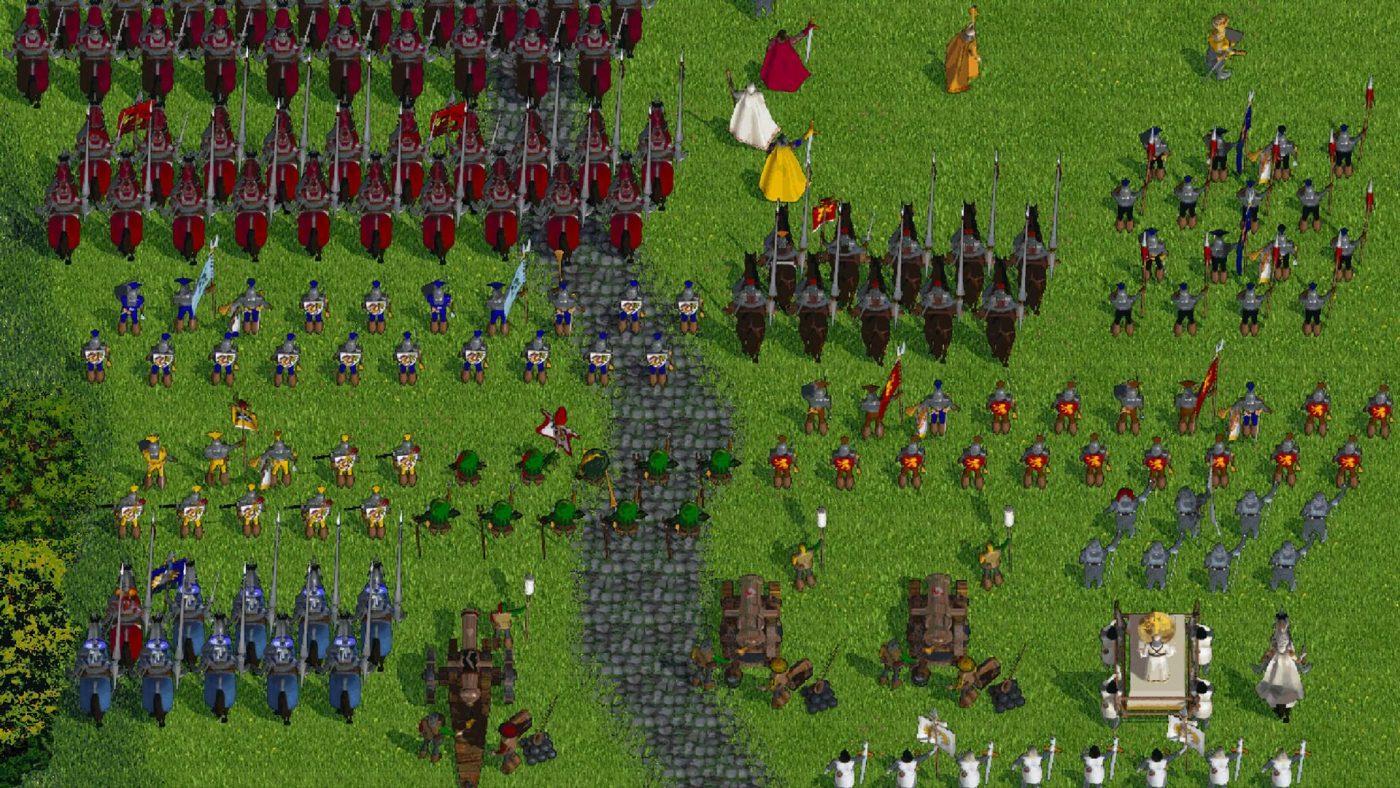In the vast landscape of strategy video games, Demonworld, released in 1997, is a notable adaptation of the tabletop wargame created by German developer Hobby Products. This transition from physical miniatures to digital format was a remarkable endeavour, capturing the essence of the original while leveraging the advantages of the PC gaming medium.
Setting and Lore
Demonworld is set in the rich and immersive world of Garuda, a land ravaged by conflict and inhabited by diverse races and factions. The lore of Demonworld is intricately detailed, with each faction having its own unique history, motivations, and culture. This depth of storytelling provided a compelling backdrop for the strategic gameplay. The setting is a high-fantasy realm where humans, elves, dwarves, orcs, and demons vie for dominance. This vibrant tapestry of characters and histories created a compelling and dynamic world, setting the stage for epic battles and strategic conquests.
Factions and Their Intricacies
The factions in Demonworld are distinct and meticulously crafted, each offering unique units, abilities, and playstyles. The human factions, for example, are characterized by their versatile units and balanced approach to warfare. They possess a mix of infantry, cavalry, and ranged units, making them adaptable to various tactical situations. The elves, on the other hand, are known for their agility and mastery of magic, with units that can move swiftly and cast powerful spells to turn the tide of battle. The dwarves, true to their lore, are resilient and formidable in defence, with heavily armoured units and powerful siege weapons. The orcs and demons bring a different flavour to the battlefield, emphasizing brute strength and overwhelming force. This variety ensures that each faction feels unique and requires different strategies to master, adding depth and replayability to the game.
Gameplay Mechanics
Demonworld’s gameplay is a faithful adaptation of its tabletop predecessor, focusing on tactical warfare and strategic planning. Players command armies, manage resources, and engage in turn-based battles on hexagonal grids. The game emphasizes careful positioning, unit synergy, and terrain advantages, requiring players to think several moves ahead. The turn-based system allows for thoughtful and deliberate decision-making, echoing the strategic depth of the tabletop game.
One of the standout features of Demonworld is its detailed unit management. Each unit type has specific strengths, weaknesses, and special abilities, encouraging players to consider the composition of their armies carefully. The game also incorporates a morale system, where the morale of troops can affect their performance in battle, adding another layer of strategy. Managing the morale and condition of your forces becomes crucial, as routing units can quickly turn a favourable battle into a disastrous defeat.
Legacy and Influence
Though not as widely known as some of its contemporaries, Demonworld has left a lasting impression on those who experienced its strategic depth and rich lore. It bridged the gap between traditional tabletop gaming and digital strategy games, showcasing the potential of video games to enhance and expand upon the foundations laid by their physical counterparts. The game’s detailed world-building and complex gameplay have influenced subsequent strategy games, contributing to the genre’s evolution.
In conclusion, Demonworld is a testament to the potential of video games to adapt and expand upon traditional gaming formats. Its intricate lore, diverse factions, and strategic gameplay have earned it a place in the annals of video game history. For fans of both tabletop and digital strategy games, Demonworld offers a rich and rewarding experience that continues to be remembered and appreciated.


